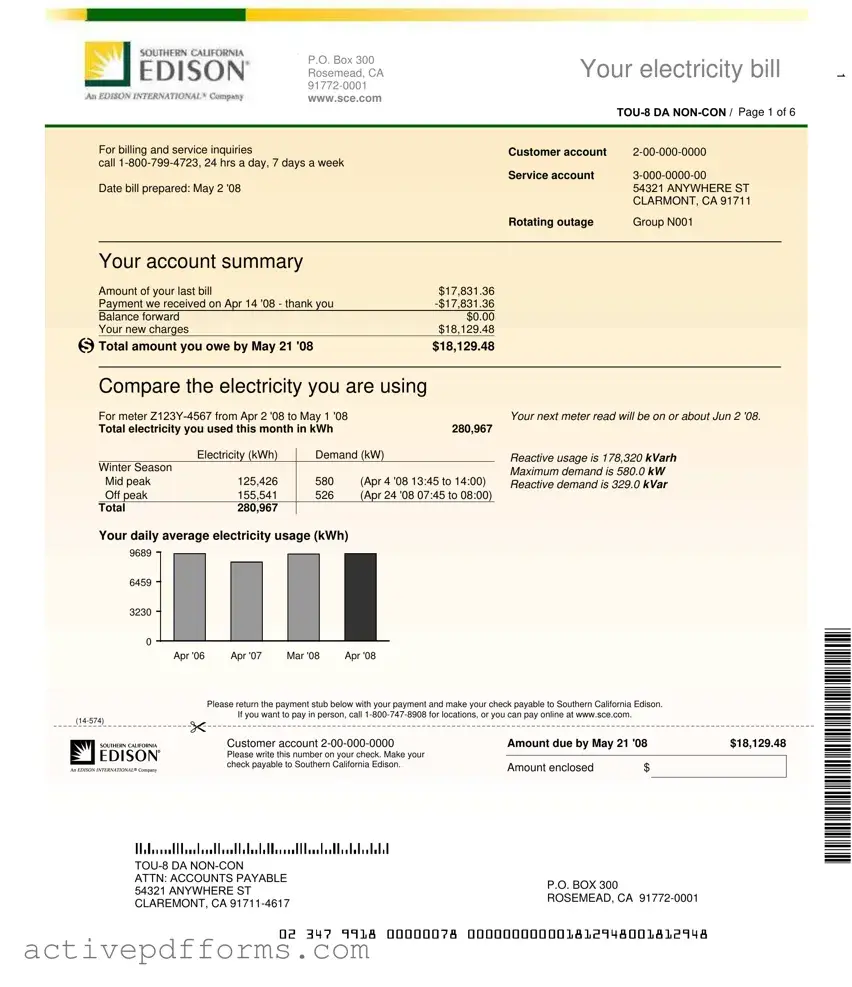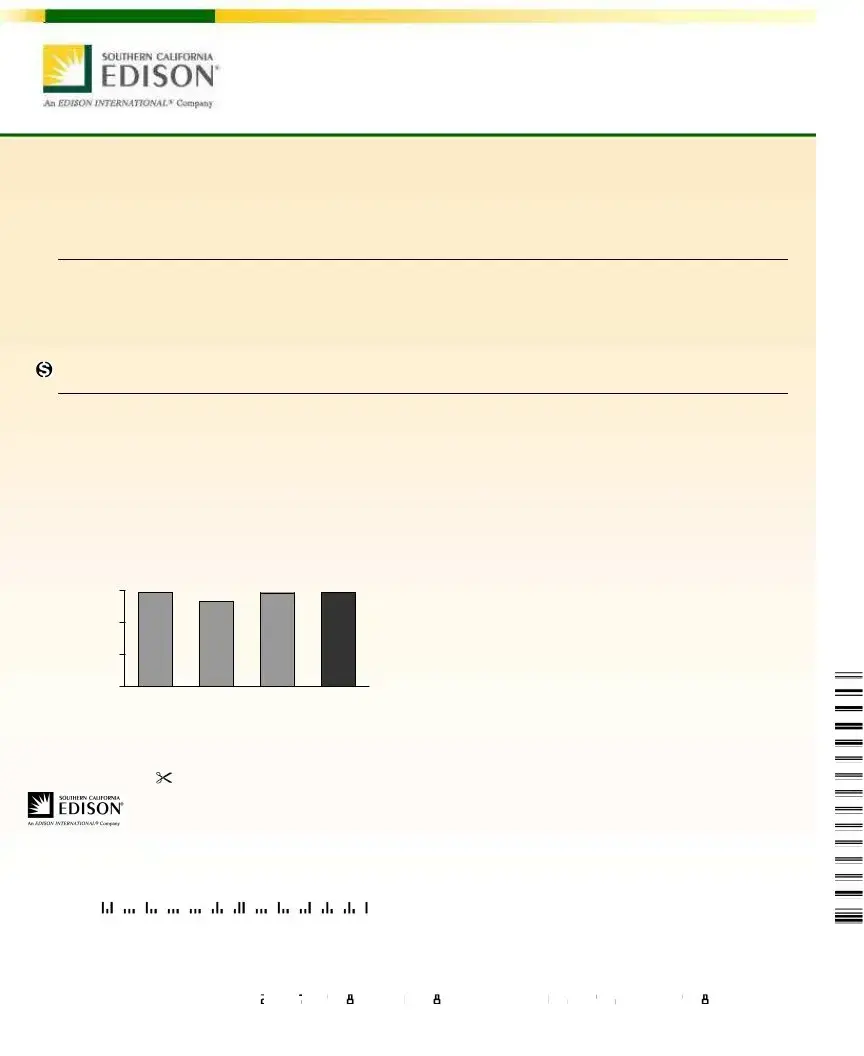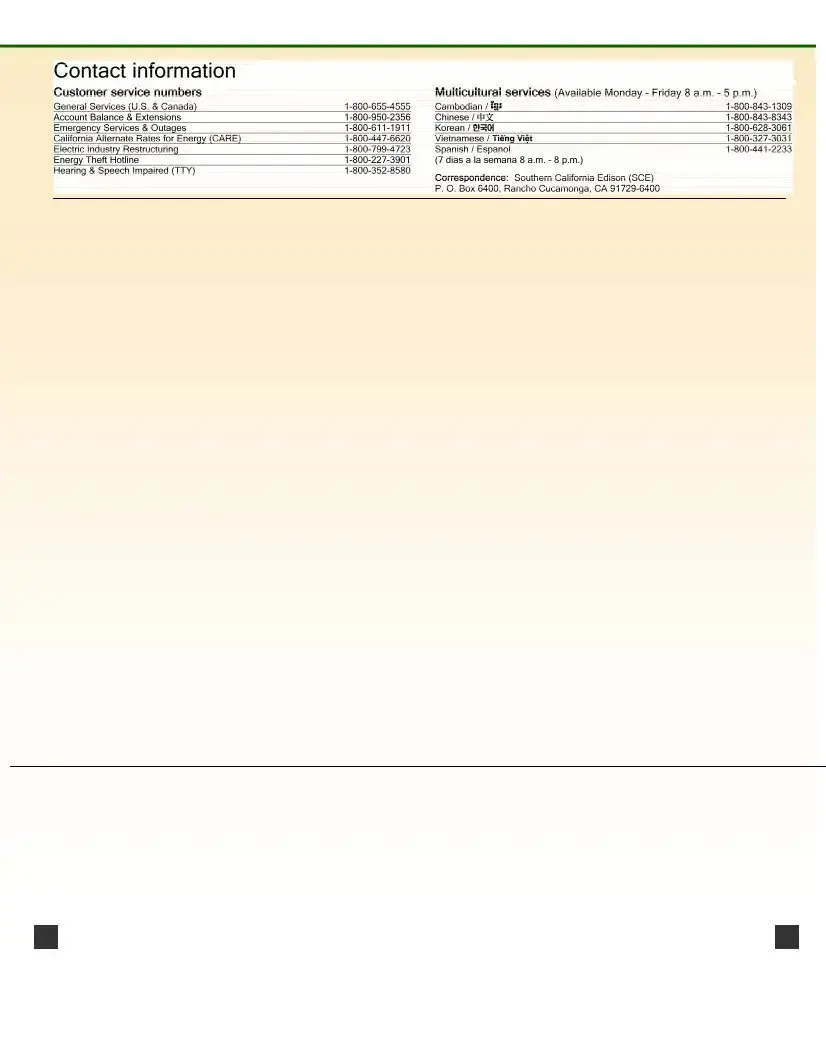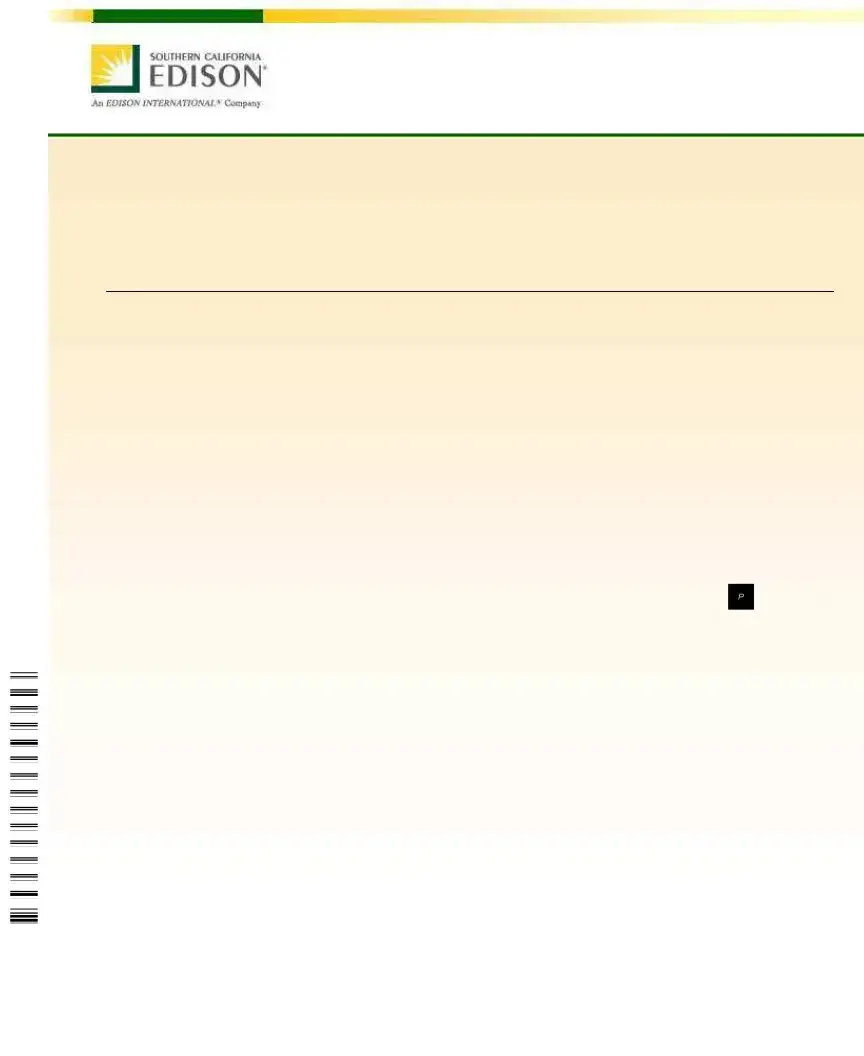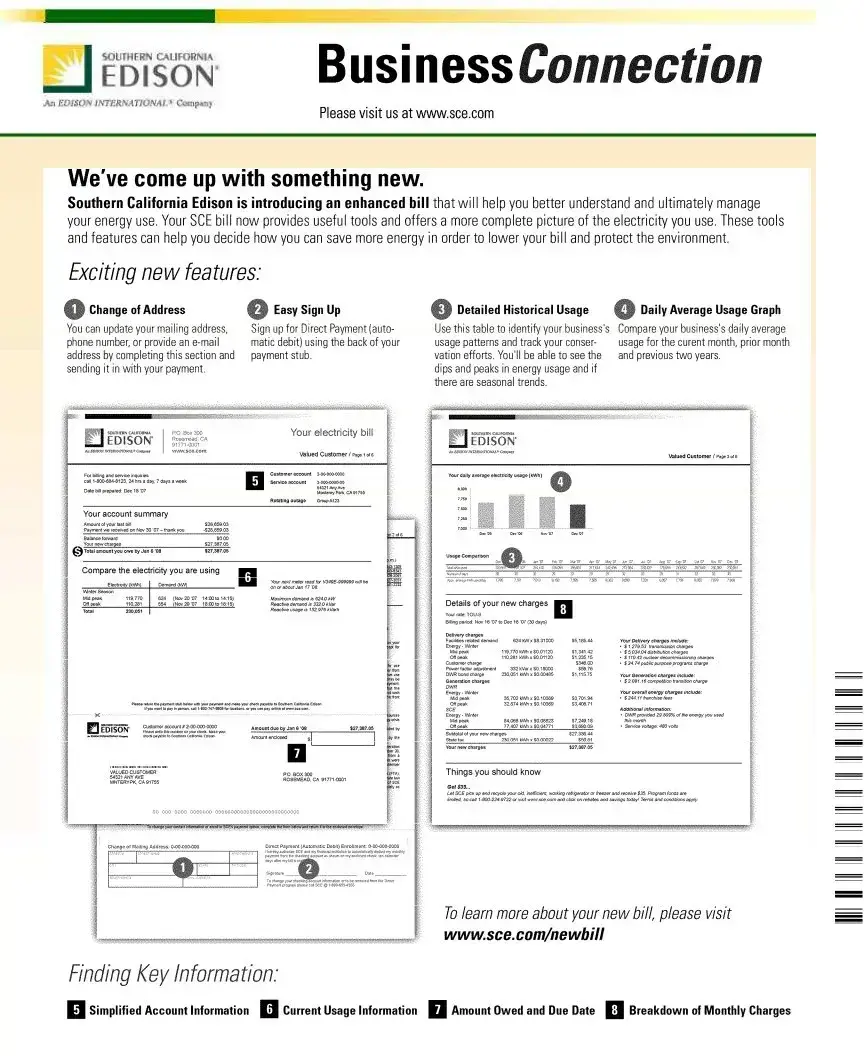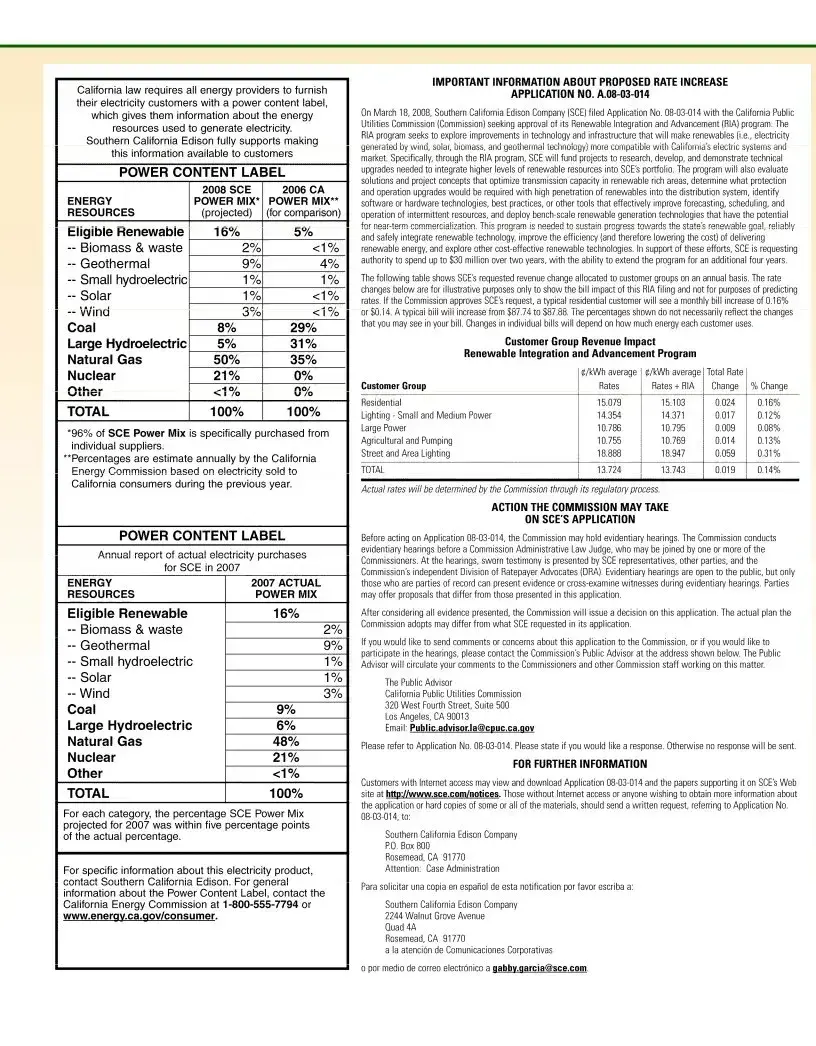Important information
Rotating Outages
A rotating outage is a controlled electric outage that lasts approximately one hour for a group of circuits, which is used during electric system emergency conditions to avoid widespread or uncontrolled blackouts. Each SCE customer is assigned a rotating outage group, shown on the upper part of the SCE bill. If your rotating outage group begins with the letters A, M, R, S, or X, you are subject to rotating outages. If it begins with N or Exempt, you are not. Your rotating outage group may change at any time. For more information, and to see which rotating outage groups are likely to be called in the event of a system emergency, visit www.sce.com or call (800) 655-4555.
Options for Paying Your Bill
You can pay your bill by:
·Mail
·In person at an authorized payment location
·By telephone
·Online at www.sce.com
You may call us for electronic payment options, to make payment arrangements, or for information on agencies to assist you in bill payment.
Past-Due Bills
Your bill was prepared on May 2, 2008. Your bill is due when you receive it and becomes past due 19 days after the date the bill was prepared. You will have 15 days at your new address to pay a bill from a prior address before your service will be terminated. SCE does not terminate residential service for non- payment of bills for other classes of service. Termination of electric service requires a reconnection charge. A field assignment charge may appear on your next bill if SCE visits your premises because of non- payment. If you are a residential customer, and claim an inability to pay and payment arrangements have not been extended to you by SCE pursuant to SCE's filed tariffs, you may contact the California Public Utilities Commission (CPUC).
Disputed Bills
If you think your bill is incorrect, call us and speak with a customer service representative, or if necessary, with a manager. If you feel unsatisfied with the result of such discussion(s), contact the CPUC, Consumer Affairs Branch by mail at: 505 Van Ness, Room 2003, San Francisco, CA 94102; or at: WWW.CPUC.CA.GOV, (800) 649-7570, TTY: (800) 924-9599. Include a copy of your bill, why you believe SCE did not follow its rules and rates, and a check or money order made out to the CPUC for the disputed amount. You must pay the disputed amount, or send it to the CPUC, before the past-due date to avoid disconnection. The CPUC accepts payment only for matters relating directly to bill accuracy. While the CPUC is investigating your complaint, you must pay any new SCE bills that become due.
Rules and Rates
SCE's rules and rates are available in full at www.sce.com or upon request.
Late Payment Charge (LPC)
A late payment charge of .9% will be applied to the total unpaid balance on your account if full payment is not received by the due date on this bill (except for CARE rate and state agency accounts).
Electronic Fund Transfers (EFT)
When you provide a check as payment, you authorize us either to use information from your check to make a one-time electronic fund transfer from your account or to process the payment as a check transaction. When we use information from your check to make an electronic fund transfer, funds may be withdrawn from your account as soon as the same day we receive your payment. You will not receive your check back from your financial institution, but the transaction will appear on your financial institution statement. If you do not wish to authorize an electronic fund transfer, please call the 800 number on the front of your bill.
